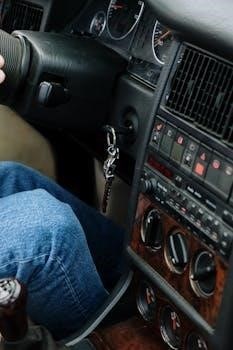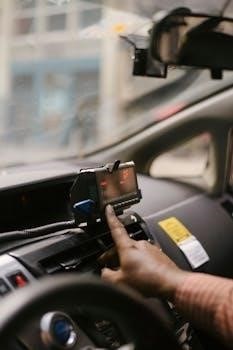TEF Exam Overview
What is the TEF Exam?
The Test d’Évaluation de Français (TEF) is an international reference exam that measures your French language skills. It assesses the level of written and spoken French for non-native speakers, crucial for immigration or academic purposes. The TEF is offered by the CCI Paris Ile-de-France.
What is the TEF Exam?
The Test d’Évaluation de Français (TEF) is a standardized French language proficiency test designed to evaluate the language skills of non-native speakers. It is an international benchmark used to assess an individual’s level in French, both written and spoken. The TEF is particularly important for individuals aiming to immigrate to Canada, for working or study permits, permanent residency or for Canadian citizenship applications. The exam is issued by the CCI Paris Ile-de-France and is recognized globally as a reliable measure of French language competency. The TEF can also be useful for academic purposes and professional development where French language skills are required. The test assesses various aspects of French, ensuring a comprehensive evaluation of a candidate’s ability to communicate effectively in the language. The TEF is crucial for those needing to demonstrate their French proficiency for official purposes.
TEF Exam Formats⁚ Paper and Online
The Test d’Évaluation de Français (TEF) is available in two primary formats⁚ a traditional paper-based test and a more contemporary online version, known as the e-TEF. Both formats assess the same range of French language skills, encompassing reading, listening, writing, and speaking abilities. The paper format is administered in designated test centers, requiring candidates to physically complete the exam materials. The online version, or e-TEF, is taken on a computer at a test center and offers a digital interface for answering questions. The choice between paper and online can depend on personal preference and the availability of testing centers. The online version might offer quicker results and a more modern experience, while the paper format is a standard and familiar approach. Both formats maintain the same level of rigor and validity in assessing French proficiency. It is important to verify with testing centers which format they offer for your test date.

TEF Exam Preparation Resources
PrepMyFuture is an e-learning platform specializing in language test preparation, offering comprehensive resources for the TEF exam. It provides practice materials tailored to the TEF format, covering all components of the exam.
PrepMyFuture Online Platform
PrepMyFuture offers a comprehensive online platform designed for TEF exam preparation. This e-learning tool covers all components of the TEF, including writing and oral comprehension, writing expression, and lexicon and structure. Upon purchase, users receive login information within 48 hours, granting access for one year. The platform provides extensive practice exercises, often around 1,600, and detailed explanations for each question, aiding in understanding mistakes and identifying strengths and weaknesses. PrepMyFuture is a self-study platform, allowing individuals to prepare at their own pace. It also includes individual statistics to help track progress. The platform allows people to get ready for all types of TEF (TEF Canada, TEFAQ, etc.) It’s a helpful resource for those seeking a structured and self-paced approach to TEF preparation, ensuring a thorough understanding of the exam format and content. The platform is accessible with a computer and a stable internet connection.
CCIP Resources and Sample Tests
The Chamber of Commerce and Industry of Paris (CCIP) provides valuable resources for TEF exam preparation. As the issuer of the TEF since 1998, the CCIP offers guidelines and sample tests that are essential for understanding the exam format and content. These materials can help you familiarize yourself with the types of questions and the overall structure of the TEF. The CCIP’s resources are often available in PDF format, making them easily accessible for download. These materials include sample papers and tutorials, allowing candidates to practice under conditions similar to the actual exam. By using CCIP resources, candidates can gain a solid foundation for their TEF preparation, ensuring they are well-equipped to tackle the exam effectively. The CCIP resources are designed to provide official guidance and authentic practice material. Exploring these resources can be a significant step in your TEF preparation journey.
TEF Preparation Courses
Many institutions and online platforms offer TEF preparation courses designed to help candidates succeed. These courses provide structured learning environments, expert guidance, and personalized support. They often cover all components of the TEF exam, including writing, comprehension, speaking, and listening. TEF preparation courses can be found in various formats, such as in-person classes and online modules. These courses typically offer practice exercises, mock exams, and detailed explanations to improve understanding and identify areas for improvement. Some courses may also incorporate techniques and advice to enhance exam performance. They provide a comprehensive approach to exam preparation, ensuring learners are well-prepared for the different sections of the TEF. Whether you prefer a self-study format or a guided course, there are numerous options available to support your TEF preparation journey. Effective courses adapt to your learning style and pace, ensuring you are confident and ready for the exam.

Key Components of TEF Exam Preparation
Practice exercises and mock exams are essential for TEF preparation. They simulate real exam conditions, helping you get familiar with question formats and time constraints. These tools help identify your strengths and weaknesses.
Practice Exercises and Mock Exams
Engaging in regular practice exercises and mock exams is a cornerstone of effective TEF exam preparation. These resources offer a realistic simulation of the actual test environment, helping you become accustomed to the question formats, time constraints, and overall pressure of the exam. Extensive practice, such as the 1,600 exercises available in some preparation packages, allows you to hone your skills across all five essential modules of the TEF. Mock exams, in particular, are invaluable for assessing your progress and identifying areas where you need to focus your study efforts. They not only help you familiarize yourself with the structure of the test but also offer opportunities to develop effective time management strategies. Detailed explanations for each question in these practice materials enable you to understand your mistakes and learn from them, contributing to a more thorough and effective preparation process. Furthermore, practicing in conditions that replicate the real exam can reduce test anxiety and boost your confidence on exam day. Using these resources consistently is key to achieving a high score on the TEF.
Focus on All TEF Modules
A comprehensive approach to TEF exam preparation requires dedicated focus on all the modules assessed in the test. The TEF evaluates various aspects of French language proficiency, including reading comprehension, listening comprehension, writing expression, and lexicon and structure. Each module presents unique challenges, and neglecting any one area can significantly impact your overall score. Therefore, your preparation strategy should allocate sufficient time and resources to each of these components. For example, you should practice answering diverse types of questions in reading comprehension, improve your listening skills by working with audio materials, and refine your writing through regular exercises. Similarly, a good grasp of French grammar and vocabulary is crucial for success in the lexicon and structure module. By working systematically across all modules, you ensure that you have a balanced skill set and are well-prepared to tackle any part of the TEF exam. A balanced approach is crucial for maximizing your potential for success.
Understanding Question Formats
A key element of effective TEF preparation is thoroughly understanding the question formats used in each module. The TEF exam employs a variety of question types, from multiple-choice questions in reading and listening to open-ended responses in writing and speaking. Familiarizing yourself with these formats is essential for optimizing your performance. For example, you need to know how to identify the correct answer in a multiple-choice setting and also understand how to structure a clear, concise, and coherent response in the writing section. Practice with sample questions will allow you to become comfortable with the different question types and develop strategies for answering them effectively. This includes recognising the nuances of language used, anticipating the kind of answers expected, and managing your time efficiently during the exam. Understanding the question formats will enable you to approach the exam with confidence and avoid any surprises.

Additional Tips and Information
Registration typically requires acceptance of terms and conditions. Arrive at your test center on time with your ID. Your results will be available in about two weeks, and your certificate will show your score.
Registration and Test Day Procedures
To register for the TEF exam, you must typically agree to the registration and examination terms. Ensure you complete all necessary forms and provide accurate personal information. Upon registration, you’ll likely receive confirmation details via email, sometimes within 48 hours. Remember to check your spam folder if you don’t see it in your inbox. Arrive at your designated test center at the specified time on the day of the examination. You must bring a valid form of identification, which should remain visible on the table for verification purposes. During the test, adhere strictly to all instructions provided by the invigilators. Your results will be sent to you approximately two weeks after the test date. The certificate you receive will detail your score on a scale of 699 for each section of the exam. If you are attending a test center be sure to be aware of all the rules and regulations.
Result Delivery and Certificate
Following the completion of your TEF exam, your results will be sent to you within approximately two weeks. The results are typically provided via email or through an online portal, depending on the testing center’s protocol. The certificate you receive will display your performance in each of the test’s sections. Each score is presented on a scale of 699, allowing you to understand your proficiency level across different language skills. The certificate serves as an official document verifying your French language abilities. It’s important to keep the certificate safe as it may be required for immigration applications or other purposes. Be sure to review your scores carefully and understand what they mean in the context of your specific goals. The certificate is an international reference for your French level.

TEF Exam Purpose for Immigration to Canada
The TEF Canada exam is a crucial language proficiency test designed specifically for individuals seeking to immigrate to Canada. It is a mandatory requirement for various immigration pathways, including work permits, study permits, permanent residency applications, and Canadian citizenship. The exam assesses your French language abilities in reading, writing, listening, and speaking, ensuring you meet the language proficiency standards set by Canadian immigration authorities. Achieving a satisfactory score on the TEF Canada exam is an essential step in demonstrating your readiness to integrate into a French-speaking environment within Canada. The results are directly used by Immigration, Refugees and Citizenship Canada (IRCC) to evaluate your language skills. Therefore, thorough preparation for the TEF Canada exam is vital for a successful immigration process. This test is an international reference for evaluating your French skills for immigration purposes.





